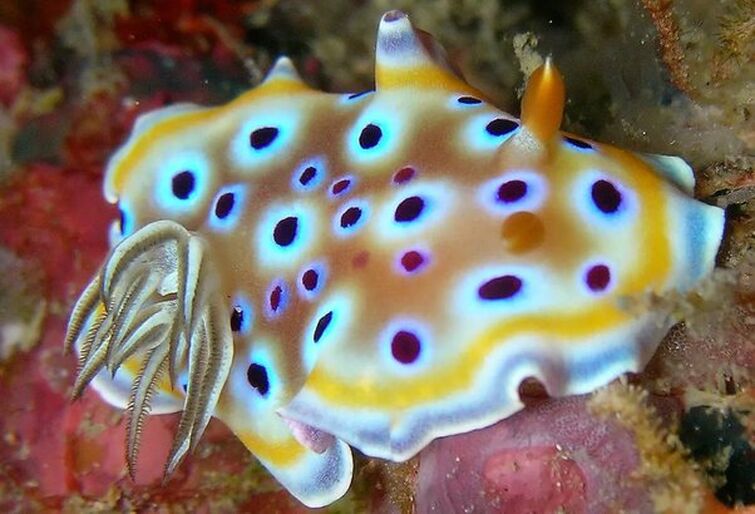Elephant Slug Sea Clear Twitter Flying ? Euclid Nmscoordinateexchange
How it relates to the sea clear concept All these animals are called slugs. The pterotracheoidea is a taxonomic superfamily of sea snails or sea slugs, marine gastropod molluscs in the clade littorinimorpha.
WATCH Siphopteron Dumbo Sea Slug Looks Like Dumbo When It Swims
They are commonly called heteropods or sea elephants. Scutus antipodes, the prosobranch elephant slug, sydney. They are commonly called heteropods or sea elephants.
Black sea slugs in reef tank from:
Mike duggan, february 8, 2008 a black sea slug in an aquarium from: Sampo tiensuu, december 12, 2007 found what i believe to be a sea slug or snail in my tank from: Chad naujoks, november 28, 2007 re: Aubrey, may 18, 2007 re:
Hey everyone, i have fluval evo 13.5g for almost a month now. Parameters are good and i am keeping up with the maintenance. I have a mix reef but mostly frags 1 hammer coral (colony) 1 torch (colony) 1 montipora I had an elephant slug with some live rock i got from a craigslister.

He and i both had corals of all types and that particular snail was harmless and quite the awesome creature.
They keyhole has black in the middle of the white, the elephant slug does not. In fact elephant seals can dive up to 5000 feet!!! The dolabella sea hare is also commonly known as the giant sea hare or the elephant slug. Reefs4less.com is a reputable online retailer that specializes in saltwater aquarium supplies.
The elephant slug, like most fissurellidae possess a primitive respiratory system. Water is sucked through a slit in the posterior (back) end and passed over two primitive gills. Once gas exchange has occurred, the water is pumped out the rectum or anus. The elephant snail looks like it has grown too big for its shell.

A member of the limpet family, this snail is easy to identify because of its large size and black colour.
Elephant snails are found in intertidal Fissurellidae is a family of gastropods, a class consisting of snails and slugs of all shapes and sizes. The elephant snail is unique from most true limpets in that the mantle slit is associated with the animals posterior end (back). The shell is usually covered by flaps of the mantle, but they sometimes withdraw slightly to expose part of the shell.
Confirming my id as elephant slug? Just spotted this guy after lights out. Big sucker caught my eye Fissurellidae is a family of gastropods, a class consisting of snails and slugs of all shapes and sizes.

The elephant snail is unique from most true limpets in that the mantle slit is associated with the animals posterior end (back).
The pterotracheoidea is a taxonomic superfamily of sea snails or sea slugs, marine gastropod molluscs in the clade littorinimorpha. They are commonly called heteropods or sea elephants. They are commonly called heteropods or sea elephants. The slug has tentacles, and has black flaps on the side making it look like a flower.
I heard it's called an elephant slug, but can't seem to find it anywhere. I'd appreciate a link to the species or what it's diet consists of. Elvis, 2003 (aug 11) identification of a black slug. A pronounced snout can be observed when viewing the elephant slug from underneath.

This extended snout which resembles an elephants trunk may be where the name 'elephant slug' comes from.
The pronounced snout which houses the animals radula enables the elephant slug to graze on algae in hard to reach places between rocks. Hey everyone, i have fluval evo 13.5g for almost a month now. Parameters are good and i am keeping up with the maintenance. I have a mix reef but mostly frags 1 hammer coral (colony) 1 torch (colony) 1 montipora
I first noticed this guy a few months ago and decided he was an elephant snail/slug. At that point he was the size of a quarter. Now he's two and a half to three inches long and two inches wide as a guess, since he stretches as he goes. He use to have a white shell on his back, but now it's not there.
As such they are quite closely related to such families as the tritons (ranellidae) and the tun shells (tonnidae).
We would like to show you a description here but the site won’t allow us. At night it moves out from under rocks to forage on drift algae. Clear sea creatures are an intriguing and unique group of marine animals that have captured the attention of scientists and the public alike. These creatures are characterized by their transparent or translucent bodies, which allow for a fascinating view of their inner workings.
Découvrez leur apparence extraordinaire, leurs traits uniques et les efforts déployés pour protéger leurs populations. Like many algal feeding gastropods, elephant slugs are slow moving cryptic animals. Hidden during the day, elephant slugs emerge to feed on drift algae at night on the low tide. They use a muscular foot and chemosensory tentacles to exploit algal growth on nearby rocks and corals.
The pterotracheoidea is, according to the taxonomy of the gastropoda (bouchet & rocroi, 2005), a taxonomic superfamily of sea snails or sea slugs, marine gastropod molluscs in the clade littorinimorpha.
The elephant slug is an animal slug used in metal slug 3. Part of the animal ride series of slug, the elephant slug is very slow and can only jump at a very short height, but it gives the rider a high profile, which is some protection. It is only equipped with pair of vulcans, but it gets additional firepower by eating chili peppers or a car battery, after which the elephant becomes able to Pupa sulcata, an opisthobranch sea slug, new caledonia, october 1993.
Limax maximus, a pulmonate land slug, sydney garden.